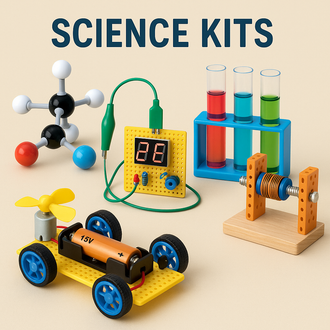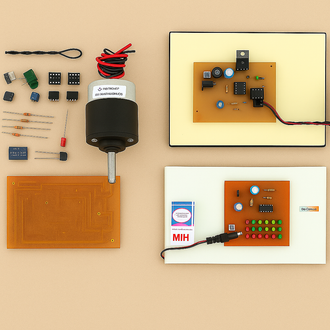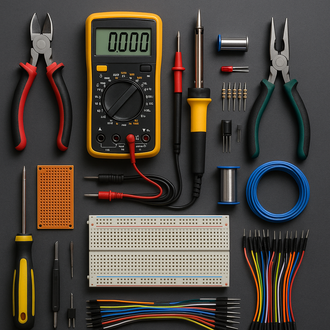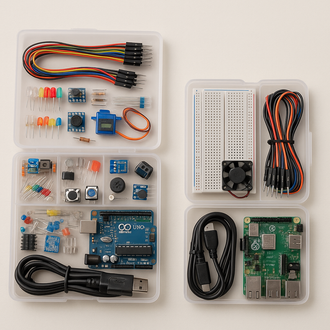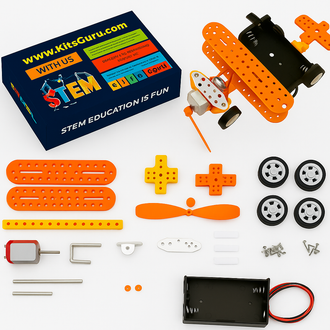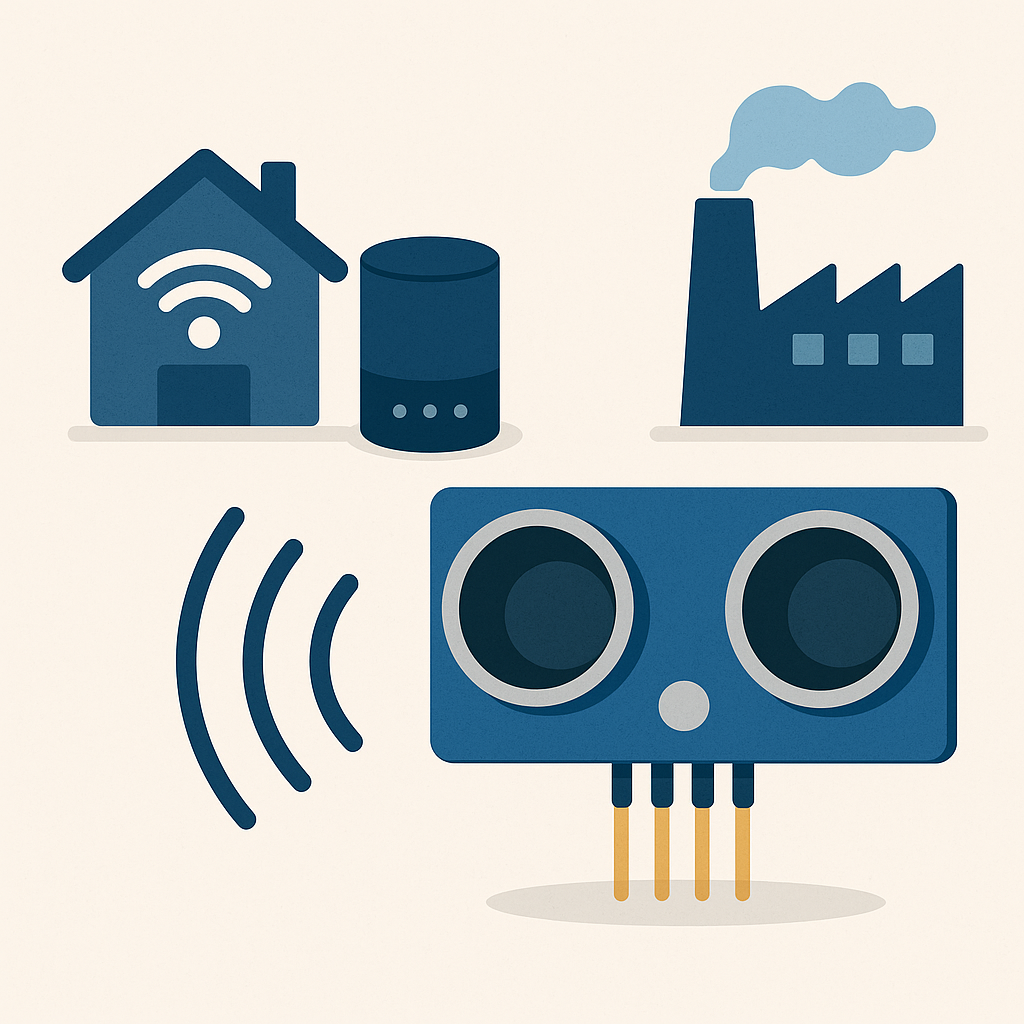
Ultrasonic Sensors in IoT: Smart Solutions for Home and Industry
- 14 Oct, 2025
In the Internet of Things (IoT) age, sensors are like the smart systems' eyes and ears. Ultrasonic sensors are some of the best sensors for making homes and businesses more automated because they are reliable, accurate, and flexible. These sensors are changing technology in a big way by measuring distances, finding motion, and keeping track of resources.
What are ultrasonic sensors and how do they do their job?
Ultrasonic sensors use sound waves that are too high for people to hear (above 20 kHz) to find things and figure out how far away they are. They send out a pulse with a high frequency and then time how long it takes for the echo to bounce off something and come back. This is what the time-of-flight principle says.
One of the most common types is the HC-SR04 ultrasonic sensor, which is also called the hc sr04 ultrasonic sensor. This module is cheap and works well. It can tell how far away things are, from a few centimeters to a lot of meters. This sensor is used by robots and IoT devices that need to find and measure barriers very precisely.
How well and how far ultrasonic sensors can see
The distance an ultrasonic sensor can see can change based on how it was made, how often it is used, and the weather. The HC-SR04 is a common module that can measure distances between 2 cm and 400 cm with an accuracy of about 3 mm. The temperature, humidity, and angle of the object can all make it a little less accurate—always check the ultrasonic sensor range for your module.
Ruggedized sensors are made to work in tougher conditions and over longer distances. They can be used in businesses to automate tasks, keep an eye on fluid levels, and manage parking.
How to connect ultrasonic sensors to Arduino and the Internet of Things
People often use the Internet of Things (IoT) to connect an ultrasonic sensor to a microcontroller like Arduino. A simple ultrasonic sensor Arduino code can be used with an ultrasonic sensor to measure distances and send the information to cloud services like Blynk, ThingSpeak, or AWS IoT for real-time analysis and monitoring.
This mix can be used to make smart parking systems, robots that can measure distance and find their way around, or automatic door openers. You can make all of these things with basic logic and hardware that is easy to find.
// Sample Arduino Code for an ultrasonic distance sensor
long duration; int distance;
#define trigPin 9
#define echoPin 10
void setup() {
pinMode(trigPin, OUTPUT);
pinMode(echoPin, INPUT);
Serial.begin(9600);
}
void loop() {
digitalWrite(trigPin, LOW); delayMicroseconds(2);
digitalWrite(trigPin, HIGH); delayMicroseconds(10);
digitalWrite(trigPin, LOW);
duration = pulseIn(echoPin, HIGH);
distance = duration * 0.034 / 2;
Serial.print("Distance: "); Serial.print(distance); Serial.println(" cm");
delay(1000);
}
This simple program shows engineers and hobbyists how an ultrasonic distance sensor works and how it talks to microcontrollers. After everything is set up, data can be sent wirelessly to IoT dashboards or mobile apps.
How Smart Homes Make Use of It
- Smart water tanks check the water levels and turn on the pumps on their own.
- An ultrasonic detector can pick up movement and sound an alarm when something moves within a certain range.
- Automatic Door Systems: They open the door on their own when they see someone close by.
- You can save energy by turning off lights and appliances when there aren't many people in the room.
These apps use small parts, like the HC-SR04 sensor or ultrasonic detector, that are simple to set up and use at home.
Ultrasonic Technology That Makes Work Happen on Its Own
Ultrasonic sensors are often used in manufacturing and industrial automation to take measurements without having to touch anything. They work well when optical sensors can't because of dust, moisture, or temperature changes.
- Level Measurement: Keeping an eye on the levels of liquids or grains in tanks and silos.
- Object detection is the process of finding things on conveyor belts so they can be counted or sorted.
- Safety: They are used in safety interlocks to let you know when someone is there.
- How robots in factories move around without hitting anything.
Industrial ultrasonic sensors work well even when conditions are bad because they have stronger cases and are more sensitive.
What are the pros of using ultrasonic sensors in IoT systems?
- Not touching Measurement: Works well for materials that are weak or risky.
- A lot of options Coverage: a few millimeters to a few meters.
- Works well in dark, rainy, or dusty places; doesn't care about the weather.
- Not expensive: It's easy to connect IoT devices with cheap parts like the hc sr04 ultrasonic sensor.
The Internet of Things (IoT) is using ultrasonic sensing in new ways
Ultrasonic technology is becoming more and more connected to AI and cloud analytics as the Internet of Things (IoT) grows. These sensors send information to computers, which can then figure out when repairs are needed, manage resources on their own, or build infrastructure for smart cities.
- Smart Waste Management: Ultrasonic sensors check how full the bins are and figure out the best way to pick them up.
- Smart Agriculture: used to find tools nearby and manage watering.
- With Industrial IoT (IIoT), you can fully control logistics, automation, and production.
How to Pick the Best Ultrasonic Sensor
When picking an ultrasonic sensor for your project, think about these things:
- Small robots only need to be able to see things that are 2 to 50 centimeters away. Tanks or parking systems need a long range, up to 10 m. Look at the ultrasonic sensor range specs.
- Environment: Sensors that can be used outside or to measure the levels of liquids that won't get wet.
- Interface: It can work with both microcontrollers and PLCs that are used in factories.
- There are two ways to mount: strong threaded housings and small modules that sit on the board.
How to Use Ultrasonic Sensors in Real-Life IoT Projects
- The smart parking system knows what kind of car it is and sends that information to IoT dashboards.
- Automatic Trash Can: The lid opens on its own when it sees something moving.
- A way to measure distance: This tool uses an ultrasonic distance sensor to measure distance in real time and send the data to a Bluetooth or Wi-Fi device.
- Smart Water Level Controller: It uses pumps that are connected to the Internet of Things (IoT) to control the flow of water.
Final Thoughts
Ultrasonic sensors are important for the Internet of Things (IoT) because they link the real world to the digital world. These sensors are reliable, accurate, and flexible. You can use them for a lot of things, like an ultrasonic distance sensor for your robot or an industrial detector for automation.
Anyone can make smart, connected systems for homes, communities, or businesses with cheap modules like the HC-SR04 ultrasonic sensor and simple programming with ultrasonic sensor arduino code.
KitsGuru Ultrasonic Sensors has more advanced sensors and IoT parts. Today is the day to begin your next smart project!


